
Indoor Gardening: Growing Spider Web Succulents at Home
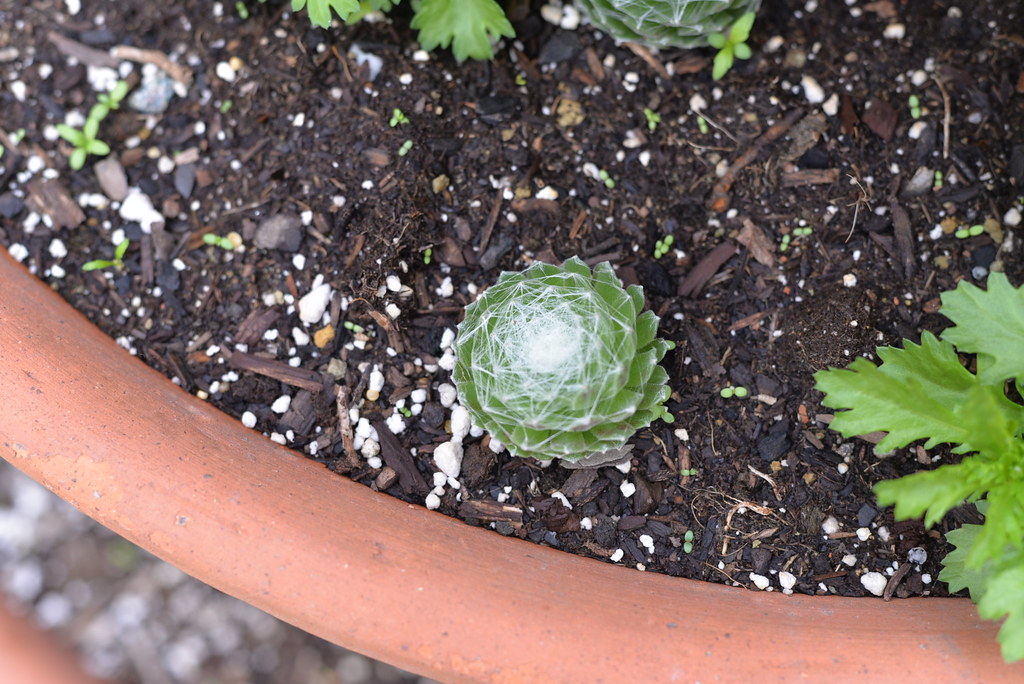
Indoor gardening has become increasingly popular in recent years, as more and more people are looking for ways to bring nature into their homes. One fascinating aspect of indoor gardening is the ability to grow unique and exotic plants that may not thrive in traditional outdoor environments. One such plant is the Spider Web Succulent, a captivating and visually striking succulent that can be grown successfully indoors.
We will explore the world of indoor gardening and delve into the specifics of growing Spider Web Succulents at home. We will discuss the ideal conditions for these plants, including light and temperature requirements. Additionally, we will provide step-by-step instructions on how to propagate and care for Spider Web Succulents, ensuring that you can enjoy their beauty in your own indoor garden. Whether you are a seasoned indoor gardener or just starting out, this article will provide you with valuable insights and tips to successfully grow Spider Web Succulents at home.
- Choose a well-draining potting mix for your spider web succulents
- Provide ample sunlight for your spider web succulents
- Water your spider web succulents properly
- Place your spider web succulents in a location that receives bright, indirect sunlight
- Water your spider web succulents sparingly, allowing the soil to dry out between waterings
- Use a spray bottle to mist the leaves of your spider web succulents to provide humidity
- Fertilize your spider web succulents with a balanced, water-soluble fertilizer during the growing season
- Prune any dead or decaying leaves from your spider web succulents to promote healthy growth
- Protect your spider web succulents from extreme temperatures and drafts
- Propagate your spider web succulents by taking stem cuttings and allowing them to root in well-draining soil
- Keep an eye out for common pests such as mealybugs or spider mites, and treat accordingly
- Enjoy the unique and striking appearance of your spider web succulents as they grow and thrive in your indoor garden
- Frequently Asked Questions
Choose a well-draining potting mix for your spider web succulents
When it comes to growing spider web succulents indoors, choosing the right potting mix is crucial. These unique plants have delicate roots that require a well-draining medium to prevent root rot and promote healthy growth.
An ideal potting mix for spider web succulents is one that combines regular potting soil with perlite or pumice. This mixture helps improve drainage and allows excess water to flow freely through the soil, preventing waterlogged conditions that can lead to root issues.
Additionally, adding coarse sand to the mix can further enhance drainage and create a well-aerated environment for the roots. This is particularly important for spider web succulents, as their roots are prone to rot if they stay wet for extended periods.
Remember to avoid using heavy garden soils or those containing high amounts of organic matter, as they tend to retain moisture and can suffocate the roots. Spider web succulents prefer a more arid environment, so a well-draining potting mix is essential for their overall health and longevity.
Provide ample sunlight for your spider web succulents
Just like other succulents, spider web succulents thrive in bright and indirect sunlight. These plants are native to arid regions and have adapted to receiving intense sunlight for several hours a day.
 Exploring Root Depths in Succulents: Understanding Root Growth
Exploring Root Depths in Succulents: Understanding Root GrowthWhen growing spider web succulents indoors, it's important to find a spot that receives at least 4-6 hours of sunlight daily. Placing them near a south or west-facing window is ideal, as these directions usually provide the most sunlight throughout the day.
If your home doesn't have sufficient natural light, you can supplement it with artificial grow lights. LED grow lights are a popular choice for indoor gardening as they emit the right spectrum of light for plant growth and can be adjusted to meet the specific needs of spider web succulents.
Remember to rotate your spider web succulents regularly to ensure that all sides receive equal exposure to sunlight. This will help prevent the plant from leaning or growing lopsided.
Water your spider web succulents properly
Proper watering is essential for the well-being of spider web succulents. These plants have adapted to survive in arid conditions, and overwatering can lead to root rot and other issues.
Allow the soil to dry out completely between waterings. Stick your finger about an inch deep into the soil, and if it feels dry, it's time to water your spider web succulent. When watering, be sure to thoroughly saturate the soil, allowing the excess water to drain out from the pot's drainage holes.
During the winter months, when spider web succulents enter a period of dormancy, reduce the frequency of watering. It's essential to strike a balance and avoid both underwatering and overwatering to maintain the health and longevity of your spider web succulents.
Remember, each plant is unique, and factors such as temperature, humidity, and pot size can influence their water requirements. Pay attention to your spider web succulents' cues and adjust your watering routine accordingly.
 Vertical Succulents: Discover Which Types Grow Straight Up
Vertical Succulents: Discover Which Types Grow Straight UpPlace your spider web succulents in a location that receives bright, indirect sunlight
Why bright, indirect sunlight is important for spider web succulents
Spider web succulents thrive in bright, indirect sunlight. This means they need enough light to grow and remain healthy, but direct sunlight can be harmful to their delicate leaves. Placing them in a location that receives bright, indirect sunlight ensures they get the right amount of light without risking sunburn or leaf damage.
Choosing the perfect spot for your spider web succulents
When selecting a location for your spider web succulents, consider areas in your home that receive bright, indirect sunlight for a significant part of the day. South or east-facing windows are usually ideal, as they provide ample light without exposing the plants to harsh afternoon sun.
Consider using sheer curtains or blinds
If your windows receive direct sunlight for a portion of the day, consider using sheer curtains or blinds to filter the light. This will help create the ideal environment for your spider web succulents, allowing them to receive the necessary light while protecting them from any potential harm caused by direct sunlight.
Rotating your spider web succulents
Remember that as the sun moves throughout the day, the intensity and angle of sunlight can change. To ensure even growth and prevent your spider web succulents from leaning towards the light, it's a good idea to rotate them every few weeks. This will help promote balanced growth and keep your plants looking their best.
Monitoring the light levels
Keep a close eye on the light levels in the chosen location for your spider web succulents. If you notice signs of etiolation (stretching towards the light) or discoloration, it may be an indication that they are not receiving enough light or are getting too much direct sunlight. Adjust their placement accordingly to provide the optimal lighting conditions.
Proper lighting is essential for the health and growth of spider web succulents. By placing them in a location that receives bright, indirect sunlight, using sheer curtains or blinds to filter the light, rotating them periodically, and monitoring the light levels, you can create the perfect environment for your spider web succulents to thrive and flourish in your indoor garden.
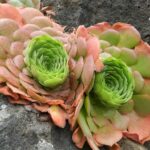 Can Succulents Easily Spread and Overrun Gardens?
Can Succulents Easily Spread and Overrun Gardens?Water your spider web succulents sparingly, allowing the soil to dry out between waterings
Spider web succulents are a unique and visually appealing addition to any indoor garden. With their delicate white web-like patterns and vibrant green leaves, these succulents are sure to catch the eye of anyone who enters your home. However, one important aspect of caring for spider web succulents is knowing how to water them properly.
Spider web succulents, like most succulents, are native to arid regions and have adapted to survive in dry conditions. Therefore, they do not require frequent watering and can actually suffer if overwatered. As a general rule, it is best to water your spider web succulents sparingly, allowing the soil to dry out between waterings.
When it comes to watering, it is essential to use a well-draining soil mix specifically formulated for succulents. This will prevent water from pooling around the roots and causing rot. It is also a good idea to choose a pot with drainage holes to ensure excess water can escape.
Before watering, always check the moisture level of the soil. Stick your finger about an inch into the soil - if it feels dry, it's time to water. If it still feels moist, wait a few more days before watering again.
When watering your spider web succulents, be careful not to pour water directly onto the leaves or web-like patterns, as this can cause them to rot. Instead, aim to water the soil directly at the base of the plant. Slowly pour water until it begins to drain out of the bottom of the pot.
During the winter months, spider web succulents enter a period of dormancy and require even less water. Reduce watering frequency to about once every two to three weeks, or when the soil is completely dry.
 Step-by-Step Guide to Propagating Bear Paw Succulent from a Leaf
Step-by-Step Guide to Propagating Bear Paw Succulent from a LeafRemember, spider web succulents are resilient and can tolerate some neglect. It's better to underwater than overwater, as they are more likely to bounce back from dryness than from root rot caused by excessive moisture.
Use a spray bottle to mist the leaves of your spider web succulents to provide humidity
Spider web succulents are a unique type of succulent that feature delicate web-like patterns on their leaves, resembling intricate spider webs. These stunning plants are becoming increasingly popular among indoor gardeners due to their unusual appearance and low maintenance requirements.
When it comes to caring for your spider web succulents, providing adequate humidity is crucial for their overall health and growth. These plants originate from arid regions, so replicating their natural environment is essential.
To maintain the right level of humidity for your spider web succulents, a simple and effective method is to use a spray bottle to mist the leaves. Fill the spray bottle with clean, lukewarm water and lightly mist the leaves of your plants. Be sure to mist them evenly, ensuring that all the leaves receive a gentle spray.
The misting process should be done once or twice a week, depending on the humidity levels in your home. If you live in a dry climate or during the winter months when indoor heating can dry out the air, you may need to mist your spider web succulents more frequently.
Note: It's important to avoid over-misting or allowing water to accumulate on the leaves, as this can lead to rot or fungal diseases. The goal is to provide a light mist that creates a slightly humid environment without causing excess moisture.
 Propagating Succulent Leaves: A Guide to Growing New Plants
Propagating Succulent Leaves: A Guide to Growing New PlantsIn addition to misting, you can also enhance humidity levels around your spider web succulents by placing a tray filled with water near the plants. As the water evaporates, it will increase the moisture in the surrounding air.
Remember: Spider web succulents are drought-tolerant plants, so it's crucial not to overwater them. Allow the soil to dry out between waterings, and always check the moisture level by inserting your finger about an inch into the soil. If it feels dry, it's time to water.
By providing the right amount of humidity, you can ensure that your spider web succulents thrive and continue to display their stunning web-like patterns. With proper care and attention, these unique plants will be a standout addition to your indoor garden.
Fertilize your spider web succulents with a balanced, water-soluble fertilizer during the growing season
Spider web succulents are a popular choice for indoor gardening enthusiasts due to their unique appearance and low maintenance requirements. To ensure that your spider web succulents thrive and grow healthy, it is important to provide them with the necessary nutrients.
One of the key steps in caring for spider web succulents is fertilizing them during the growing season. Fertilizers provide essential nutrients that may be lacking in the soil, helping the plants to grow and develop properly.
Choosing the Right Fertilizer
When it comes to choosing a fertilizer for your spider web succulents, it is important to opt for a balanced, water-soluble fertilizer. Look for a fertilizer with an N-P-K ratio of 10-10-10 or 20-20-20, which indicates the percentage of nitrogen (N), phosphorus (P), and potassium (K) in the fertilizer.
 Can You Propagate Donkey's Tail Succulent with Leaf Cuttings?
Can You Propagate Donkey's Tail Succulent with Leaf Cuttings?A balanced fertilizer ensures that your spider web succulents receive a mix of essential nutrients to support their overall growth and development. The water-soluble nature of the fertilizer allows for easy absorption by the plants' roots.
Fertilizing Frequency
During the growing season, which typically spans from spring to early fall, fertilize your spider web succulents once every four to six weeks. This frequency provides a consistent supply of nutrients to the plants without overwhelming them.
It is important not to over-fertilize your spider web succulents, as this can lead to nutrient burn and other issues. Always follow the instructions provided by the fertilizer manufacturer for the recommended dosage and frequency of application.
Application Method
When applying fertilizer to your spider web succulents, it is crucial to dilute the fertilizer according to the instructions provided. Mix the water-soluble fertilizer with water in the recommended ratio, and then water the plants with the solution.
Ensure that the diluted fertilizer reaches the root zone of the plants. Avoid getting the fertilizer on the foliage, as this can cause damage or burn the leaves.
Additionally, remember to water your spider web succulents thoroughly before applying the fertilizer. This helps prevent the plants from absorbing excess fertilizer, reducing the risk of nutrient burn.
By following these guidelines for fertilizing your spider web succulents, you can provide them with the necessary nutrients to promote healthy growth and vibrant foliage. Remember to always monitor the condition of your plants and adjust the fertilizing routine as needed based on their specific requirements.
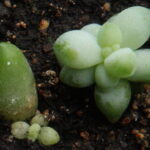 Succulent Propagation: Home Techniques for Thriving Varieties
Succulent Propagation: Home Techniques for Thriving VarietiesPrune any dead or decaying leaves from your spider web succulents to promote healthy growth
Spider web succulents are a unique and visually appealing addition to any indoor garden. With their intricate web-like patterns and low maintenance requirements, these succulents are becoming increasingly popular among plant enthusiasts. However, to ensure the health and vitality of your spider web succulents, it is crucial to prune any dead or decaying leaves.
Pruning dead or decaying leaves not only improves the overall appearance of your spider web succulents but also promotes healthy growth. By removing these leaves, you eliminate potential breeding grounds for pests and diseases, allowing your succulents to thrive.
To prune your spider web succulents effectively, follow these simple steps:
- Inspect the plant: Carefully examine your spider web succulent to identify any dead or decaying leaves. These leaves may appear discolored, wilted, or dried out. It is essential to distinguish between healthy leaves and those that need to be pruned.
- Prepare your tools: Before proceeding with the pruning process, gather the necessary tools. You will need a pair of clean, sharp scissors or pruning shears. It is crucial to use clean tools to prevent the spread of diseases or infections.
- Remove the dead leaves: Using your scissors or pruning shears, carefully cut off the dead or decaying leaves at their base. Make sure to make clean cuts without damaging the healthy foliage. If you notice any signs of pests or diseases, dispose of the affected leaves properly to prevent further infestation.
- Dispose of the pruned leaves: Once you have pruned the dead leaves, it is important to dispose of them properly. Avoid leaving them around the plant or in the potting soil, as this can attract pests or promote the growth of fungal infections. Seal the pruned leaves in a plastic bag and discard them in the trash.
- Maintain regular pruning: Pruning dead or decaying leaves should be a regular part of your spider web succulent care routine. As your succulent grows, new leaves may become damaged or diseased. By regularly inspecting and pruning, you can maintain the health and beauty of your spider web succulents.
Remember, proper pruning is key to keeping your spider web succulents thriving and looking their best. With a little care and attention, you can enjoy the stunning web-like patterns of these unique indoor plants.
Protect your spider web succulents from extreme temperatures and drafts
Spider web succulents are unique and delicate plants that require specific care to thrive indoors. One crucial aspect of their care is protecting them from extreme temperatures and drafts. Here are some tips to ensure your spider web succulents stay healthy and happy:
1. Find the ideal temperature range
Spider web succulents prefer temperatures between 60°F and 80°F (15°C and 27°C). Extreme cold or heat can cause damage to their delicate leaves and slow down their growth. It's essential to keep them away from cold drafts near windows or doors during the winter months. Similarly, avoid placing them near heat sources such as radiators or vents, as this can dry out the plant.
 Fast-Spreading and Prolific Succulents: A Guide to Rapid Propagation
Fast-Spreading and Prolific Succulents: A Guide to Rapid Propagation2. Provide proper insulation
If you live in an area with fluctuating temperatures, consider using insulation techniques to protect your spider web succulents. Use window insulator kits or bubble wrap to provide an extra layer of protection against cold drafts. This will help maintain a stable temperature around the plants and prevent temperature shocks.
3. Avoid sudden temperature changes
Spider web succulents are sensitive to sudden temperature changes. Avoid placing them in areas that experience rapid temperature fluctuations, such as near air conditioning units or open windows. Gradual changes in temperature are better tolerated by these delicate plants.
4. Use a thermometer
Monitoring the temperature in the area where your spider web succulents are located is crucial. Invest in a thermometer to keep track of the temperature and ensure it stays within the recommended range. This way, you can take necessary actions to adjust the temperature if needed.
Remember, maintaining a stable and suitable temperature is essential for the health and growth of your spider web succulents. By following these tips, you can create an ideal environment for your plants to thrive indoors.
Propagate your spider web succulents by taking stem cuttings and allowing them to root in well-draining soil
Spider web succulents, scientifically known as Haworthia fasciata, are popular indoor plants known for their unique web-like patterns and low maintenance requirements. If you want to expand your collection or share these beautiful succulents with friends, propagating them through stem cuttings is a simple and effective method.
Here's a step-by-step guide on how to propagate spider web succulents:
 Can Succulent Leaves Regrow Once They Drop?
Can Succulent Leaves Regrow Once They Drop?- Prepare your materials: Before you start, gather the following materials: a clean pair of scissors or pruning shears, a well-draining potting mix, a small container or tray, and a spray bottle filled with water.
- Select a healthy parent plant: Choose a mature spider web succulent with several healthy leaves. Look for a plant that is not overcrowded and has vibrant colors.
- Take stem cuttings: Using the sterilized scissors or pruning shears, carefully cut a stem from the parent plant. Make sure the cutting is at least 2-3 inches long and has a few leaves attached to it. Allow the cutting to dry for a day or two to prevent rot.
- Prepare the potting mix: Fill a small container or tray with a well-draining potting mix. Spider web succulents prefer a sandy or gritty mix that allows excess water to drain away quickly.
- Plant the cuttings: Make small holes in the potting mix with your finger or a pencil. Gently place the stem cuttings into the holes and lightly press the soil around them to secure them in place.
- Maintain proper moisture: Mist the cuttings with water from the spray bottle to provide them with moisture. Avoid overwatering, as spider web succulents are prone to rot when sitting in soggy soil. Ensure the soil is slightly damp but not wet.
- Provide adequate light: Place the container in a bright location, away from direct sunlight. Spider web succulents thrive in indirect light conditions, so a spot near a window or under a grow light is ideal.
- Monitor and care for the cuttings: Check the cuttings regularly to ensure they remain hydrated. Avoid overwatering or underwatering, as both can hinder their growth. Within a few weeks, you should notice new root growth, indicating successful propagation.
Remember, patience is key when propagating spider web succulents. It may take several weeks or even months for the cuttings to establish roots and develop into healthy plants. Once the new plants have grown enough, you can transfer them to individual pots and continue caring for them as mature spider web succulents.
By following these simple steps, you can easily propagate your spider web succulents and enjoy the beauty of these captivating plants in different areas of your home or share them with fellow plant enthusiasts. Happy gardening!
Keep an eye out for common pests such as mealybugs or spider mites, and treat accordingly
When it comes to indoor gardening, one important aspect to consider is the presence of pests. Common pests such as mealybugs and spider mites can wreak havoc on your spider web succulents if not addressed promptly.
Mealybugs are tiny, white, cotton-like insects that feed on the sap of plants. They often appear as fluffy masses on the leaves or stems of succulents. If left untreated, mealybugs can cause stunted growth and yellowing of the leaves. To get rid of mealybugs, you can use a cotton swab soaked in rubbing alcohol to gently wipe them away. Alternatively, you can use an insecticidal soap or neem oil spray to eliminate them.
Spider mites, on the other hand, are minuscule pests that are difficult to spot with the naked eye. They suck the sap out of the plants, leaving behind tiny yellow or white specks on the leaves. If you notice web-like structures on your succulents, it's a sure sign of a spider mite infestation. To combat spider mites, regularly mist your plants with water to increase humidity and discourage their presence. You can also use insecticidal soap or neem oil spray to control these pests.
Prevention is key
While dealing with pests is a part of gardening, it's always better to prevent infestations in the first place. Here are some preventative measures you can take:
- Quarantine new plants: Before introducing new plants to your indoor garden, isolate them for a few weeks to ensure they are pest-free.
- Maintain proper air circulation: Good airflow helps keep pests at bay by preventing stagnant conditions that they thrive in.
- Regularly inspect your plants: Take the time to examine your spider web succulents for any signs of pests or diseases. Catching them early can prevent them from spreading to other plants.
- Keep your plants clean: Remove any dead leaves, debris, or fallen flowers from your plants. These can attract pests and create a breeding ground.
By being proactive and vigilant in identifying and treating common pests, you can ensure the health and vitality of your spider web succulents. Remember to regularly inspect your plants, maintain good air circulation, and practice proper hygiene in your indoor garden. With these measures in place, you can enjoy a thriving indoor garden filled with beautiful spider web succulents.
 Can Succulent Leaves Grow Roots When Planted in Soil?
Can Succulent Leaves Grow Roots When Planted in Soil?Enjoy the unique and striking appearance of your spider web succulents as they grow and thrive in your indoor garden
Indoor gardening has become increasingly popular among plant enthusiasts, and one captivating addition to any indoor garden is the spider web succulent. These unique plants feature a striking appearance, resembling a spider's web with their intricate patterns and delicate filaments.
Spider web succulents, also known as Haworthia fasciata, are native to South Africa and are prized for their low maintenance requirements and stunning aesthetics. They are a member of the succulent family, which means they have the ability to store water in their leaves, allowing them to survive in dry conditions.
The Perfect Indoor Plant
If you're looking for a plant that can thrive indoors, spider web succulents are an excellent choice. They prefer bright, indirect light, making them perfect for placing near a window or in a well-lit room. However, they can also tolerate lower light conditions, making them versatile for various indoor environments.
Spider web succulents have compact growth habits, and their leaves form rosettes, giving them a charming and symmetrical appearance. Their leaves are thick and fleshy, which helps them retain water, making them more forgiving for those who may forget to water their plants regularly.
Caring for Spider Web Succulents
When it comes to caring for spider web succulents, it's essential to keep in mind their unique needs. Here are a few care tips to help your spider web succulents thrive:
- Light: Place your spider web succulents in bright, indirect light. Avoid direct sunlight, as it can scorch their leaves.
- Watering: Spider web succulents prefer slightly drier conditions. Water them thoroughly but allow the soil to dry out between waterings to prevent root rot.
- Temperature: Spider web succulents thrive in moderate temperatures between 65-80°F (18-27°C). Avoid exposing them to extreme cold or heat.
- Soil: Use well-draining soil specifically formulated for succulents. A mixture of cactus soil and perlite or sand works well.
- Fertilizer: Feed your spider web succulents with a balanced, water-soluble fertilizer diluted to half strength during the growing season (spring and summer).
By following these care tips, you can ensure that your spider web succulents remain healthy and continue to showcase their captivating appearance in your indoor garden.
Spider web succulents are a perfect addition to any indoor garden. With their unique and striking appearance, low maintenance requirements, and ability to thrive in various indoor environments, they are sure to be a conversation starter. So why not bring a touch of nature indoors and enjoy the beauty of spider web succulents in your home?
Frequently Asked Questions
1. What are spider web succulents?
Spider web succulents, also known as Haworthia retusa, are a type of succulent plant with white web-like patterns on their leaves.
2. Can spider web succulents be grown indoors?
Yes, spider web succulents can be grown indoors as they thrive in bright, indirect light and can be easily adapted to indoor conditions.
3. How do I care for spider web succulents?
Spider web succulents require well-draining soil, infrequent watering, and indirect sunlight. They also prefer temperatures between 65-80°F (18-27°C).
4. How often should I water spider web succulents?
Water spider web succulents only when the soil is completely dry, usually every 2-3 weeks. Overwatering can lead to root rot and damage the plant.
If you want to read more articles similar to Indoor Gardening: Growing Spider Web Succulents at Home, you can visit the Propagation category.




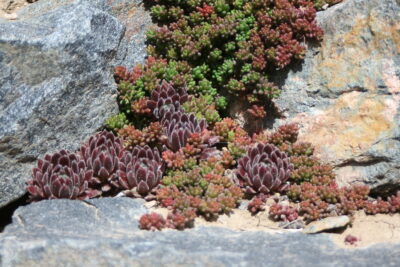
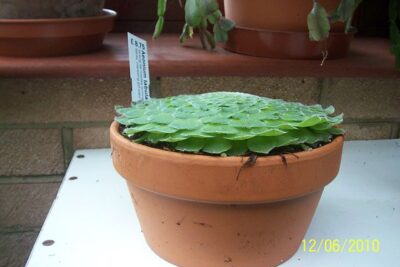
You Must Read